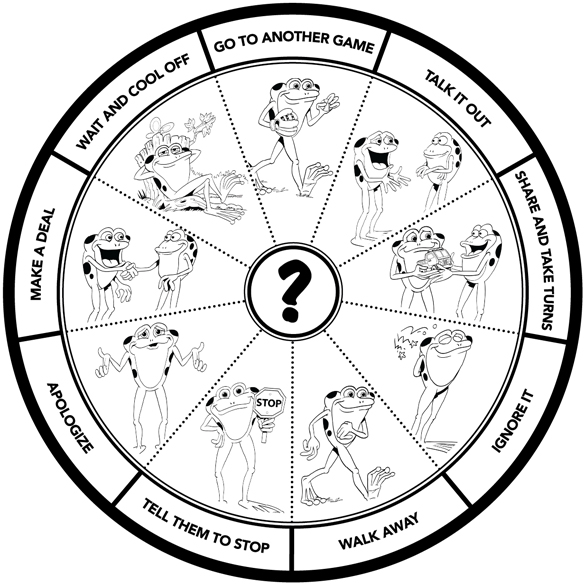Character Strong
Bucket Filling

The purpose of “Bucket Filling” is to improve social & emotional learning. It is based on a simple concept where we each have an invisible bucket with the singular purpose of holding good thoughts and feelings about ourselves. It comes from the popular children’s book ‘Have You Filled a Bucket Today?’ by Carol McCloud.
A bucket filler is someone who shows positive character traits (kind, considerate, caring, respectful). Bucket Fillers fill both their own and others’ buckets when they do and say things that are kind, considerate, caring, and respectful. Conversely, if a person is unkind or hurtful, they are referred to as “Bucket Dippers”. Like Bucket Fillers, Bucket Dippers dip into both their own bucket and others’ buckets when they choose to be mean or hurtful to others. This simple yet profound concept teaches children that actions and words affect both ourselves and others.
During this school year we are encouraging, reminding, and recognising everyone’s efforts to be bucket fillers at home, at school, and everywhere they go. As parents, you can help reinforce this by discussing this further with your child and using some of the terminology (bucket fillers, bucket dippers).
Here are some helpful links:
Have you filled a bucket today?
http://www.bucketfillers101.com/
You might like to use this concept at home too to encourage family and community members to be more positive and to fill each other’s “buckets” with compliments and positive comments.
Bucket Filling. Waitakiri Primary School. (n.d.). http://www.waitakiri.school.nz/Our+Learning/Well-being/Bucket+Filling.html.
© Copyright 2013 Waitakiri Primary School
Kelso’s Choice
The program’s success begins with its simplicity. Kids as young as preschool (and even those who aren’t strong readers yet) can benefit from learning Kelso’s Choices. Children are taught conflict resolution through Kelso’s Choice curriculum. The program puts power in kids’ hands to be problem solvers and gives everyone at school a shared language to help kids get along.
Kelso the frog teaches students how to solve “small” problems on their own. “Small” problems include conflicts that cause “small” feelings of annoyance, embarrassment, boredom, etc. “BIG problems” always need to be taken to an adult. These are situations that are scary, dangerous, illegal, etc. Students need to know when to solve "small" problems and when to get an adult for "big" problems.

Kelso has nine choices students can choose from to help solve “small problems.” These are illustrated in the Kelso’s Choice Wheel. They include:
- Go to another game
- Talk it out
- Share and take turns
- Ignore it
- Walk away
- Tell them to stop
- Apologize
- Make a deal
- Wait and cool off
When a child comes to you to solve their “small problem,” tell them to try one to two of Kelso’s choices first. If that doesn’t work, then an adult can intervene. Make sure your kids know to ask an adult for help in the event of a “BIG problem.”
Kelso's Choice. (2019, September 3). Kelso's Choice Parent Page. Kelso's Choice. https://kelsoschoice.com/free-resources/for-parents/.
Copyright © 2021 Cerebellum Corporation
Zones of Regulation
Students need to share their emotions. They are taught how to identify their emotions and how to respond appropriately through the Zones of Regulation curriculum.
The Red Zone is used to describe extremely heightened states of alertness and intense emotions. A person may be elated or experiencing anger, rage, explosive behavior, devastation, or terror when in the Red Zone.
The Yellow Zone is also used to describe a heightened state of alertness and elevated emotions; however, one has some control when in the Yellow Zone. A person may be experiencing stress, frustration, anxiety, excitement, silliness, the wiggles, or nervousness when in the Yellow Zone.
The Green Zone is used to describe a calm state of alertness. A person may be described as happy, focused, content, or ready to learn when in the Green Zone. This is the zone where optimal learning occurs.
The Blue Zone is used to describe low states of alertness and down feelings, such as when one feels sad, tired, sick, or bored.
These supports offer a multitude of resources to help your child(ren) to manage their learning, their friendships, and their success! Every one of these resources are useful at school, as well as at home. I appreciate your support from home and hope you see how these resources can empower your child to manage everyday challenges in learning and relationships!
Looking for more resources?
"Kids in the House" is the largest parenting video library in the world. This educational website aims to help parents and caregivers become better at parenting by educating, inspiring, and entertaining. This resource contains over 9,000 videos from 500 leading parenting experts, including doctors, pediatricians, psychologists, educators, best-selling authors, celebrities, and parents themselves.
Kids in the House gives parents and educators the chance to get answers to their tough questions and get first-hand tips on how to deal with particular challenges ranging from pregnancy to getting into college. The website is also customizable, allowing users to create playlists of their favorite videos and interact with other users and parents who may have dealt with similar issues. Kids in the House understands that there is a variety of parenting techniques and that there is no one-size-fits-all solution to raising a family."

